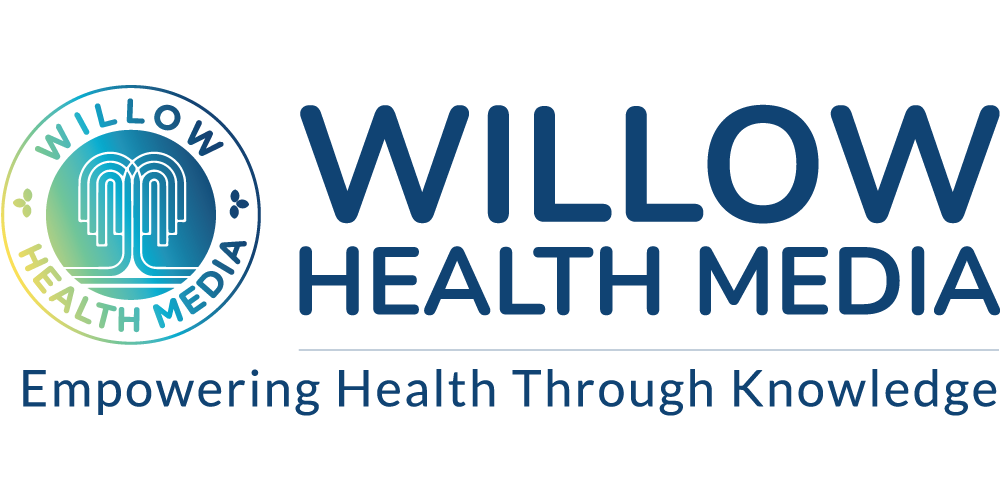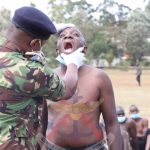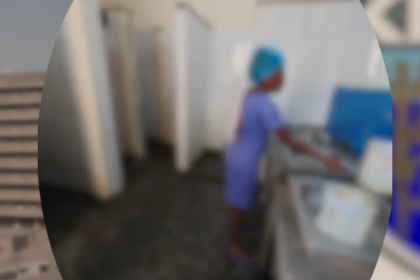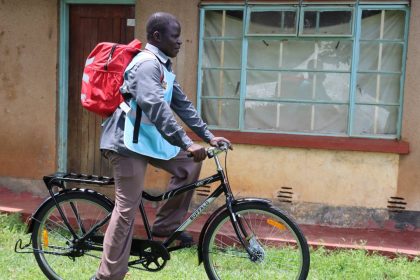‘I suddenly felt colder than I’d ever felt in my life,” Mary Otieno, a mother of five from Mombasa, recalls. ‘Then I started bleeding nonstop’ in a case of postpartum haemorrhage that kills two of every five mothers.
Mary Otieno, 38, from Kwa Bullo in Mombasa County, went to a private hospital to deliver her fifth child in August last year.
Pregnancy usually brought her joy, but this one was different as “From the start, I was extremely nauseous. I couldn’t eat anything, but for the sake of my baby, I forced myself to eat.”
Concerned, she began antenatal visits earlier than in her previous pregnancies. By her sixth month, her feet had swollen unusually. Doctors diagnosed her with low blood levels and put her on medication. Regular visits helped stabilise her blood count, and by the time she went into labour, some symptoms had eased.
Her delivery was smooth at first. She gave birth to a healthy baby girl and was moved to the maternity ward. But minutes later, something went wrong. “I suddenly felt so cold, colder than I’d ever felt in my life,” Mary recalls. “Then I started bleeding nonstop.”
Doctors quickly diagnosed postpartum haemorrhage (PPH), a severe complication after childbirth and a leading cause of death in Kenya, as two in every five maternal deaths are caused by PPH, according to the Ministry of Health.

Blood donors, some of them strangers, helped me get back to my children
Mary was referred to Coast General Teaching and Referral Hospital in critical condition, and “I was slipping in and out of consciousness,” she says softly. “I just left everything to God because in such a situation, you don’t know the outcome.”
She woke up the next morning in a hospital ward, alive but shaken. Doctors said she had lost a dangerous amount of blood and needed eight pints to survive. Her family mobilised friends and relatives to donate. “Blood saved my life,” she says. “I can’t explain the relief of knowing that donors, some of them strangers, helped me get back to my children.”
Mary’s story reflects a wider crisis. Kenya needs at least 500,000 units of blood annually, but collects only 200,000 to 250,000 units, according to the Kenya Tissue and Transplant Authority (KTTA). That leaves a shortfall of about 200,000 units every year.

The World Health Organisation (WHO) recommends 10 blood donations per 1,000 people annually, but Kenya manages only about four to six donations per 1,000. This leaves hospitals struggling to meet daily transfusion needs from mothers like Mary to accident victims and cancer patients.
During Ramadan almost 60 per cent of regular blood donors take a break from donating
Mombasa County alone requires around 2,000 units of blood monthly but collects only about 1,300 units, leaving a deficit of 700 units each month, says Keith Ziro, the County Blood Transfusion Coordinator.
Mombasa relies heavily on students from secondary schools, colleges, and universities to meet its blood collection goals. But there are challenges.

“During holidays, collections drop sharply,” Ziro explains. “We call that the low season. The same happens during Ramadan when almost 60 per cent of our regular donors take a break from donating.”
A 2024 study by Gibson Waweru Nyamu and other researchers, titled, Causes of pre- and post-donation deferrals among blood donors, at Kwale Satellite Blood Transfusion Centre, Kwale County, 2018 to 2022, reveals that most voluntary donors are young men, largely students.
Cultural myths remain one of the biggest barriers to voluntary donations. “Some people believe donating blood will make them weak or that they might get infections,” Ziro says. “We want to demystify those fears. Donating blood is safe, and it saves lives.”

Red Splash uses a smart donor algorithm to connect patients with compatible donors quickly
To bridge these gaps, the county partners with organisations like Red Splash, a youth-led initiative that organises blood drives and connects donors to patients through a mobile app.
Khadija Mohammed Juma, a nurse and the founder of Red Splash, started the organisation in 2019 after a close friend’s mother died because she couldn’t get a timely blood transfusion. “Cartels and systemic obstructions made it impossible for her to get blood when she needed it,” Khadija says. “I decided I couldn’t sit back and watch this happen to others.”
Driven by the loss of a friend’s mother, nurse Khadija Mohammed Juma created Red Splash, a donor-matching app that connects patients with compatible blood donors in real time.
Her innovation is already transforming how blood reaches those who need it most in Kenya.
Khadija’s journey, and how Red Splash is changing Kenya’s blood donation landscape, is explored in this feature: How Kenyan nurse’s app addresses blood shortages.

Red Splash uses a smart donor algorithm to connect patients with compatible donors quickly. Since its founding, the organisation has:
- Conducted over 500 blood drives
- Collected more than 75,000 pints of blood
- Registered about 3,000 regular donors
Each pint is separated into components like plasma, platelets, and packed cells, meaning a single donation can save multiple lives.

“Mothers with PPH, children with severe anaemia, accident victims, those are the people we think about every time we plan a drive,” says Khadija, who was named a finalist in the Aster Guardians Global Nursing Award 2025.
Losing two grandparents due to lack of available blood fuels Ali Mohammed’s commitment
For Mohammed Ali Mohammed, a 25-year-old university student at the Technical University of Mombasa, donating blood is deeply personal. “I started donating in secondary school when I was 18,” he says. “I took a break for two years, but in 2021, I became a regular donor again.”
Losing two grandparents due to lack of available blood fuels his commitment. “I always say, not all heroes wear capes; sometimes you just need to donate blood and be a hero,” he says proudly.
On average, Mohammed donates three to four times a year, maximising the opportunities allowed by health guidelines. He urges others to donate too, particularly for rare blood types like O negative, which can be used by patients of all blood groups.
The journey of a donated pint is meticulous. At Tudor Sub-County Hospital, Teddy Juma, a laboratory technologist, explains that every donation starts with a thorough health check.
“You don’t just walk in and donate,” Teddy says. “We use a checklist to make sure the donor is healthy and doesn’t have underlying conditions. It’s like removing fuel from a car; you need to make sure the system can handle it.”

Bleeding Out: Why Kenya’s national blood supply is running on empty
Kenya’s blood system is buckling under chronic shortages, outdated laws, and inconsistent donor supply, a crisis that leaves hospitals unable to meet even the most basic transfusion needs.
From underfunded services to policy gaps and logistical failures, the scale of the problem and what it will take to fix it are explored in this feature.
With shortages, officials are encouraging hospitals to use blood products, not whole blood
Once collected, the blood is sent to the regional blood transfusion centre (RBTC) for screening and processing. From there, it is dispatched to hospitals that request it for patients.
At Tudor, Rukiya Ahmed, the lab manager, ensures that storage protocols are followed strictly. “We don’t keep blood for more than 10 days,” she says. “If it isn’t used, we return it to the RBTC to ensure nothing goes to waste.”

The facility uses a special fridge with a transparent glass door to reduce unnecessary opening and maintain optimal storage conditions. Plans are underway to build a larger storage facility to handle more units and better serve the community.

With shortages persisting, county officials are encouraging hospitals to use blood products instead of whole blood whenever possible. Experts agree that moving from whole blood transfusion to blood component therapy could make Kenya’s limited supply go further.
“Each unit of blood can be separated into plasma, platelets, and packed cells,” Ziro explains. “This way, one unit can benefit up to three patients.”
A 2022 audit by the Office of the Auditor-General echoed this recommendation, noting that component therapy improves both safety and quality because each product can be separately tested and quality assured.
Sometimes saving a life really does come down to just one pint of donated blood
Globally, the WHO reports that 91 per cent of donated blood in high-income countries is processed into components, compared to 72 per cent in middle-income and 31 per cent in low-income countries.
Kenya’s blood system is also constrained by outdated frameworks. The Kenya Human Tissue and Organ Transplant Bill (2024), which could formalise blood donation regulations, remains pending in Parliament.

In May 2025, Principal Secretary for Medical Services Dr Ouma Oluga urged lawmakers to expedite its passage, calling it “critical for universal health coverage and maternal mortality reduction.” Public education campaigns, experts argue, must become more consistent and targeted, especially towards temporary deferrals, to keep donors engaged and ensure they return when eligible.
For survivors like Mary Otieno, the message is simple. “I never thought about donating blood before,” she admits. “But now, I tell everyone: donate if you can. You never know whose life you might save, maybe even someone in your own family.”
Grassroots initiatives like Red Splash, improved logistics at hospitals, and policy reforms at the national level are slowly shifting the tide. But without a collective effort-more donors, stronger systems, and better laws-Kenya’s blood crisis will continue to claim preventable lives.
Because sometimes saving a life really does come down to just one pint of donated blood.
You may also be interested in this explainer: “Haemophilia: The Silent Bleeding Disorder,” which breaks down what the condition is, how it’s passed down, and how it shows up in those affected.
It also highlights key issues in Kenya: about 1,100 diagnosed cases vs an estimated 5,000 actual, lack of testing infrastructure, and treatment costs of up to Ksh75,000 for children or Ksh200,000 for adults.

